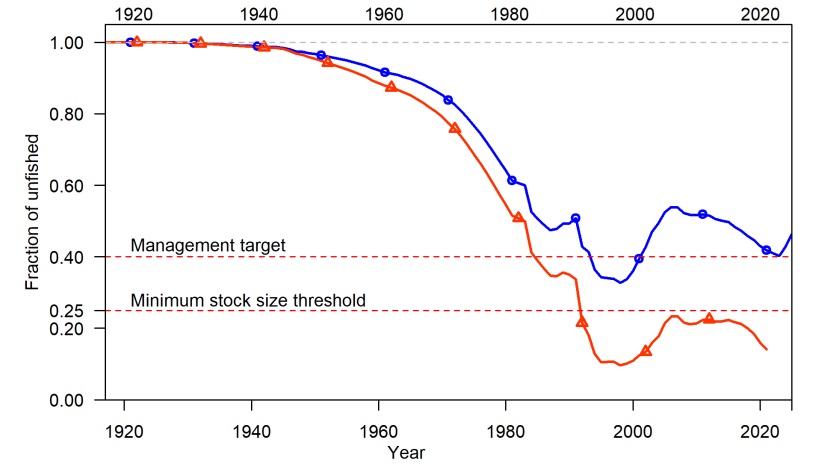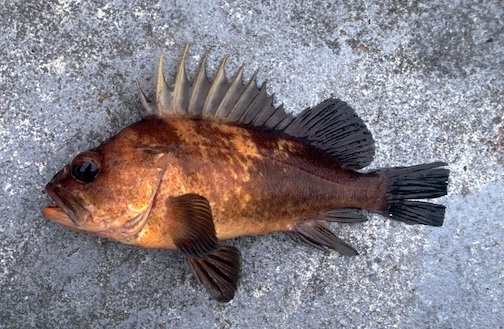Merit McCrea
ROHNERT PARK— In 2021 there was a stock assessment done for California quillback rockfish called a length-based, data moderate assessment. It was a new assessment protocol. The result estimated so few quillback rockfish that it threw California into a tail-spin, slashing the northern two thirds of the state’s rockfish access in half, with waters from 120 to 300 feet completely off limits and only the inner or outer waters fishable at any given time during a 9-month season. This spurred California fisheries scientists, fishers and fisheries managers into a whirlwind of data gathering, processing and analysis.
Tuesday the 10th this month a new draft full stock assessment on quillback was put out for review. What it showed was quit different. Instead of over-fished, at just 1/3 of the management target and decreasing, the preliminary result showed the stock size just above the target stock size and growing – more than two times as many tons of quillback.
The process for stock assessment approval for management is a review and tuning called a STAR panel, followed by a second review and judgment by the Pacific Fisheries Management Council’s Science and Statistical Team (SSC). This is done to determine if the work and modeling is sound enough to be used in determining stock status and in management.
Then in the months and meetings that follow, the Council develops those catch limit specifications that start the process of rule making and lead to new regulations. This is a process which typically takes a year and some.
But this time the need was a simple roll-back to the regs that were already in place before quillback were declared over-fished. However, the draft results weren’t approved yet. The Star Panel was scheduled for next month and the SSC review some weeks following.
The Council meeting was happening now and ordinarily there was no way for the Council to act any sooner to approve a roll-back than its next meeting, which is scheduled for September. By the time the roll back would hit the water the season would be done.
However, in a bold move to bring relief to the commercial and recreational fleets the Council pre-approved rolling back all those onerous regulations that went into place in 2024. This was pending the STAR Panel and SSC review and conditioned on the final outcome and assessment results not being significantly changed, something which roughly means the stock size result needs to come out of the review near to, or above the management target.

Basically what has happened was the 2021 assessment had imported biological estimates made on quillback from outside of California when California data were lacking. The new 2025 assessment uses new data from California waters as well as additional data that weren’t available to the 2021 assessors.
On the Council floor today California CDFW representative Marci Yaremko moved to undo all the regulations that had come out of the 2021 assessment and revert to the previous regulations that were in effect prior to 2024 when all the restrictions, went into place north of Big Sur.
There were several pages of recreational and commercial restrictions in the motion, undoing what the Council had been compelled to forward two years ago.
California Council member Marc Gorelnik seconded. When the vote came, the Council approved with unanimous support.
The Council acted to facilitate potential rescinding the federal waters portions of those regulations in advance, asking the National Marine Fisheries Service to move forward ASAP. This was perhaps the first time good news was acted on as fast as bad news in fisheries management, with automatic action given a future outcome.
The CDFW will be working to get the state-waters portion of those restrictive regulations approved for removal by the Fish and Game Commission in the coming weeks and months as well. However, it’s likely success will come incrementally, first one part then another.
There’s a commercial portion and a recreational portion, and the same for both federal and state waters. It’s likely that the federal waters part will roll back at a different date than the state waters portion.
Fingers are crossed hoping it all works out.




